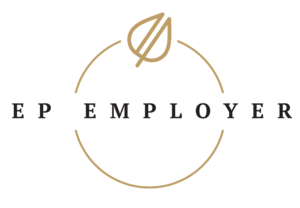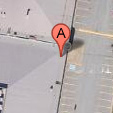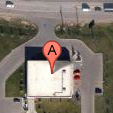- About
- Training
- eLearning
- COR & Auditing
- Resources
- OHS Legislation
- News & Events
- Job Postings
- Cognitive Psychosocial JDA
- Forums
- Lawn Maintenance Safety Toolkit
- Work Site Parties
- Contractor Management
- Videos
- Newsletters
- Onboarding Seasonal Workers
- SafetyNet Library
- WCB Updates
- Industry Task Force
- OEL Technical Working Group
- WCB-Alberta Premium Rates
- Part 40: Utility Workers - Electrical Technical Working Group
- Support
OEL Technical Working Group
contribute your voice and help shape legislated ohs hygiene limits
Alberta Jobs, Economy, Trade and Immigration (JETI) is initiating a review of Occupational Exposure Limits (OEL) in accordance with its published 2025/26 OHS Code review schedule. This review includes an OEL Technical Working Group (OEL TWG) that makes OEL recommendations for government consideration before the Government publicly consults on changes under consideration, and amends the OEL listed in Schedule 1, Table 2 of the Alberta OHS Code.
AMHSA has been invited to participate in the GoA OEL TWG but needs your timely input to ensure that our participation accurately reflects your views, including impact on the municipal sector, technical and economic factors, and rationale for proposing that an Alberta OEL be different from the American Conference of Governmental Industrial Hygienists (ACGIH) Threshold Limit Value (TLV).
municipal relevance
The majority of OELs in the current OHS Code are based on 2006 American Conference of Governmental Industrial Hygienists (ACGIH) Threshold Limit Values (TLV) and in absence of specific recommendations provided by impacted employers and industry associations - the government’s plan in principle is to adopt 2024 ACGIH TLVs for 31 substances that, in many instances, reflect OEL reductions of 80% or greater.
call to action
AMHSA will be participating in GoA OEL TWG meetings approx. every 2-weeks until the end of 2025. We need your input to support meeting agenda actions and Terms of Reference requirements of the OEL TWG.
If you would like to add your voice to impacts of changes to OELs (technical, economic, etc.) on the municipal sector, rationale for proposing that an Alberta OEL be different from ACGIH TLV please contact Edward Morgan (AMHSA Health and Safety Specialist). Anticipated municipal audiences are thought to include (but are not limited to) those who have:
- Organizational accountability for OEL compliance in your organization
- Role responsibility for supporting OEL compliance (OHS Specialist, Manager, etc.)
- Subject matter expertise in occupational hygiene (Hygienist, Hygiene Technologist, etc.)
- Operational knowledge related to priority substances scheduled for reduction
activity timelines
| Activity | Role | Timeline |
| TWG meeting participation to conduct review of short-listed OELs and other topics, as identified by the TWG. | AMHSA/TWG | Sept-Dec 2025 |
| Municipal interested parties engage with AMHSA in between TWG meetings to support accurate advocacy and representation of municipal impacts before JETI public consultation. | Municipal | |
| TWG provides recommendations/rationale to JETI on OELs | AMHSA/TWG | Jan 2026 |
| JETI to review and finalize recommendations for proposed changes and rationale on adoption of OELs | JETI | Jan 2026 |
AMHSA appreciates the very short timelines associated for input and has voiced at the OEL TWG challenges of performing adequate consultation with municipal audiences between meetings to ensure that AMHSA’s views are reflective of potential industry and operational impacts.
what’s asked of the technical working group?
In principle, the GoA plan is to adopt the 2024 ACGIH TLVs, absent of specific recommendations provided by impacted employers and industry associations. AMHSA’s attendance at the GoA OEL TWG will provide membership an opportunity to express their thoughts and provide recommendations on six topic items:
- Topic 1 – General approach to adopting ACGIH TLVs,
- Topic 2 – Airborne Particulates (Do we agree with ACGIH’s approach to size selective notations (for inhalable, thoracic and respirable) e.g. Carpentry or other Workshops.
- Topic 3 – Do we adopt ACGIH’s new inclusion of “Surface Limit (SL) OELs” (e.g. similar to surface sampling used in public-health).
- Topic 4 – OEL notations (e.g. going beyond carcinogen notations and adopting new ones such as sensitizers and eliminating Alberta centric “3” notation).
- Topic 5 – Substance-specific review (GoA proposes that the OEL TWG review 31 substance changes that can have a direct impact on Alberta Industries). Note: see notable substances, their significant OEL changes and AMHSA-related operations in table 1 below.
- Topic 6 – Chloramines e.g. in respect to worksite air quality concerns at indoor swimming pools. Note: Do we establish our own as they are absent in the ACGHI TLVs.
Interested in providing input on behalf of your municipality?
To share your municipalities views for AMHSA to voice with the OEL TWG, please reach out to Edward Morgan.
ADD YOUR INPUT ON AMHSA FORUM
A secure new “Municipal OEL Employer Consultation” channel has been added to the existing AMHSA Forum platform for identified member municipal hygienists to provide input to AMHSA.
How to Join:
- Register for an AMHSA Forum account, if you do not have an existing one.
- Contact us with a request to be added to the OEL TWG Channel.
table 1: examples of potential interest to our members
| Notable Substances | Significant TLV Changes & Notes | Related Operations |
| Chlorine/Chlorine dioxide |
|
Aquatic/Recreational Facilities |
| Chromium, metal and inorganic compounds |
|
Fabrication Facilities/Trades Fleet/Vehicle Repair Water Treatment Facilities |
| Water-soluble CR VI Compounds |
|
Water Treatment Facilities |
| Ethylene glycol |
|
Facilities/Building Maintenance Municipal Airports |
| Nitrogen dioxide |
|
Facilities (i.e. Transport/Fleet that have Mechanical/ Vehicle Repair such as Bus Barns/idling vehicles) |
| Particulate Not Otherwise Regulated – Total | *From nonexistent to 10 mg/m3
|
Facility and Road Construction (i.e. street sweeping, road construction) |
| Ozone |
|
Water Treatment Facilities |
| Wood Dust Total |
|
Carpentry and other workshops |
| Wood Dust (Total) Softwoods and hardwoods except western red cedar |
|
Carpentry and other workshops |






 Email Us
Email Us